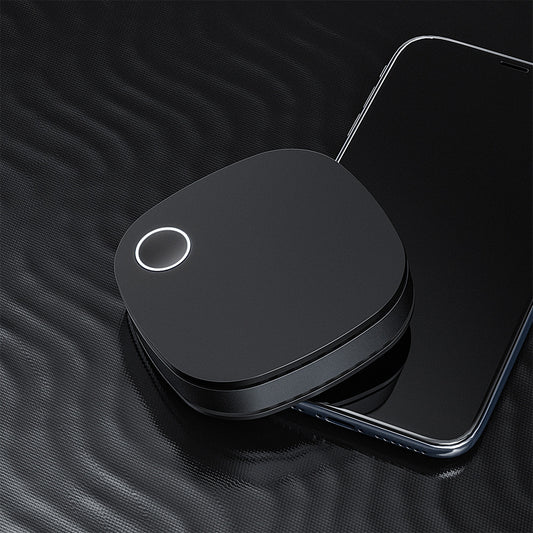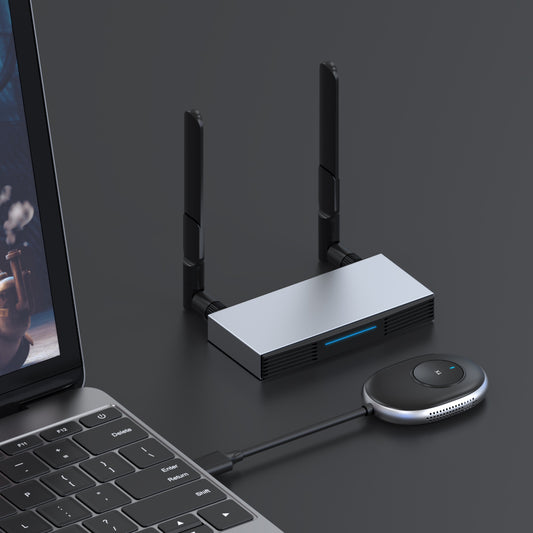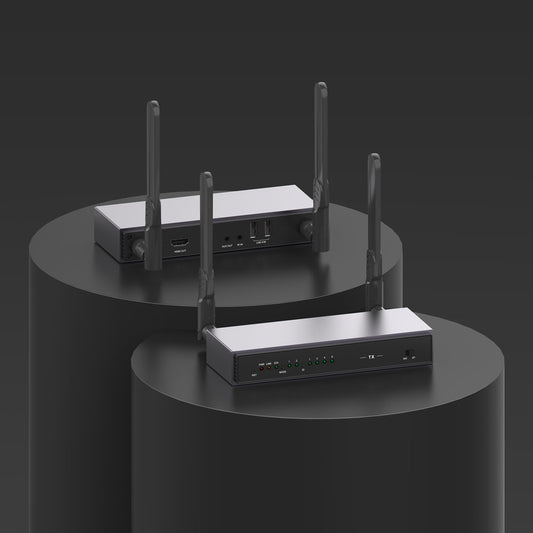
How Should I Pick The Best Wireless HDMI Extender?
One of the best and most widely used digital connection technologies, HDMI has assimilated into our daily life. However, the HDMI cable has a shortcoming: distance. Only 50 feet can be covered by HDMI wires without signal degradation. You should consider using an HDMI extender at this time.
A point-to-point gadget called an HDMI extender does exactly what it says on the tin: it extends an HDMI signal from a source (such a cable box or gaming console) to a monitor. They can assist you in extending your video source up to 300m/1000ft. However, some important factors to consider before purchasing an HDMI extender. Let's take a look at them now.
5 Varieties HDMI Extender
HDMI over HDBaseT extenders:
HD Base-T is designed to reduce cable clutter by restricting the number of connections to a single Category cable. HDMI over HDBaseT extenders: Additionally, it can send signals far farther than HDMI or DVI wires, up to 100m (328ft). The core of HDBaseT technology is 5PlayTM, a feature set that combines uncompressed full HD digital video, audio, 100BaseT Ethernet, power via cable, and numerous control signals over a single LAN line.
HDMI over IP extender:
HDMI uses an existing ethernet infrastructure over Ethernet, also known as HDMI over IP, to deliver HD video signals from one source to an infinite number of screens. Addressing the problem of the distance restriction.
HDMI over coax:
Although HDMI data cannot normally be transmitted over coax cable, it can be utilized as a feeder for RF signals. Two units are also required to provide transmission between the HDMI cable and the coaxial cable. This kind of Ethernet extender is less common in commercial applications since coax is relatively thick and rigid.Because coax is relatively thick and inflexible, this type of Ethernet extender is not as widely used in commercial applications.
HDMI over wireless:
The benefit of wireless over HDMI is that it enables a connection between the two ends that need an HDMI connection without the need for wire installation. However, for the system to function, a very good wireless connection is required; otherwise, signals may drop out from time to time, or bandwidth may be limited.
Consider our distance and signal.
The first factor to consider is distance, as it determines the supported distance for your wireless HDMI extender. Verifying that it can transmit HDMI data across the necessary distances is one of the fundamental checks.
A high-quality HDMI cable from your neighborhood big box retailer will work for distances of 10m/30ft or less. If you want to get rid of that pesky cable, consider using a wireless HDMI extender. Applications requiring transmission lengths of 30 to 330 feet can employ an HDMI extender, such as HDMI over CAT5 or higher extension (10 to 100 meters). Finally, lengths more than 100m/330ft can be reached by using an HDMI extender based on optical fiber extension.
Overall, the extension solution you choose will be determined by your application and the features you require.
Resolution
Audio and video quality, which manufacturers are constantly enhancing to deliver the greatest possible picture and audio quality, is another crucial element.
Although 1080p can meet almost all of your needs, 4K provides a more vivid and detailed image. While 1080P refers to a resolution of 1920 x 1080 pixels, 4K refers to a video resolution of 3840 x 2160 pixels. The first resolution is four times greater than the second, producing a clearer and more delicate visual appearance. The difference can be seen with the unaided eye.

In any case, keep in mind that picture quality is also affected by your television set. Just because an HDMI extender supports 4K resolution doesn't mean a 1080P TV can deliver it. Purchasing a TV is a waste of money if it cannot handle improved picture quality.
Video delay
Wireless HDMI transmitter and receiver devices have advanced significantly in terms of latency. With a normal range of 100ms to 500ms, or less than a second, a wireless HDMI extender is perfect for home theater, video projection, video presentations, and other uses.
High-performance wireless HDMI extenders, such as the ProScreenCast SC02, can transmit lossless signals with relatively low latency, depending on signal quality. It is ideal for video presentations, movies, and television.
If you cannot tolerate any video delay or want extremely low latency, we recommend purchasing a ProScreenCast SC03. In general, the price is higher than that of competitors.
Power requirements
A transmitter and a receiver are the typical components of an HDMI extension. There might not always be a nearby power outlet, making it challenging to power one of them. Some HDMI extenders might require power. So it is important to confirm whether this is the case for any extenders because access to the necessary power supply might be necessary. It can be a lower DC voltage or the mains or line input. Therefore, it is wise to double-check this before making any purchases.
Installation Difficulty
The simplicity of usage of a wireless HDMI extender is among its greatest benefits. You can position and install the majority of wireless HDMI extenders available on the market nearly anyplace in your home because they are made with a portable and compact design. Furthermore, pairing the transmitter and receiver doesn't require the installation of a specific driver or piece of software. Here, the ProScreenCast wifi extension is strongly advised. Both the transmitter and the receiver are movable and simple to set up. They can automatically pair once the power is on and the range is suitable. Plug & play; no complicated setup or software driver needed.
HDMI version supported
While Category 2 cables can support 1080p at 60 frames per second or 4K at 30 frames per second, Category 1 cables may only support 720p or 1080i resolutions at up to 60Hz. The fact that HDMI 2.0 is fully backward compatible with earlier HDMI versions must be understood. If you're interested in learning more about the differences between HDMI1.4 and HDMI2.0, you can click to read the page that comes before it.
Beginning with Wireless HDMI
The SC02 is one of ProScreenCast's well-regarded wireless products.
- Plug And Play: Get up and running in 20 seconds with a true plug-and-play experience.
- Up to 8 TX: Provides the option to switch between up to 8 different devices.
- Ultra Low Latency: Use strong 5G, stable connection, high quality, and low latency under 80 ms.
- 4k@30Hz: 4k wireless HDMI receiver, the picture image is delicate, and more details of the computer screen are perfect.
- 165ft/50m Long Distance Transmission: Point-to-point transmission distance can reach 50 meters.
- HDMI + VGA Dual Model Transmission: VGA and HDMI can be collocated freely and output at the same time or separately.
- Service: With 100% 30 days money back, a full refund guarantee, and 36 months warranty, there is nothing to worry about.

Despite the obstacles preventing wireless HDMI from being widely used, the advantages are clear. With its quick speeds and low latency, it brings you that much closer to having a completely wireless house. It is also suitable for both streaming movies and playing video games.
How do you feel about wireless HDMI? Do you employ it? If not, what is preventing you? Post your comments to let us know what you think.








